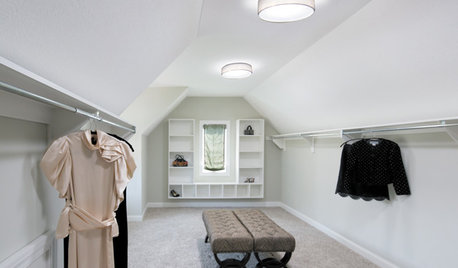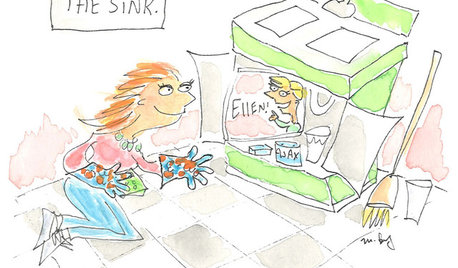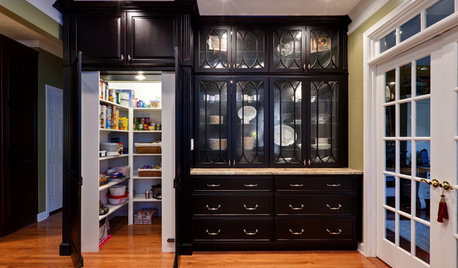knob and tube wiring
lisa98112
18 years ago
Related Stories

KITCHEN DESIGNGlued to the Tube: 14 Ways to Put a TV in the Kitchen
If you must, here's how to work a flat screen into your kitchen design
Full Story
GREAT HOME PROJECTSHow to Add a Skylight or Light Tube
New project for a new year: Increase daylight and maybe even your home’s energy efficiency by opening a room to the sky
Full Story
PRODUCT PICKSGuest Picks: Out-of-the-Ordinary Cabinet Pulls and Knobs
Whether your decor is traditional, eclectic, rustic or offbeat, this cabinet hardware can show it off and take it into another realm
Full Story
BUDGET DECORATINGPop Culture Watch: Get a Good Rap With Thrift Store Scores
Eight rooms that rock secondhand finds, in an ideabook inspired by rappers taking YouTube by storm
Full Story
SMALL HOMESMy Houzz: Heirlooms and Family Art Fill a 1920s Bungalow
Personal touches trump a huge design budget for a Florida couple with a taste for Americana
Full Story
DECORATING GUIDESDecorate With Intention: Helping Your TV Blend In
Somewhere between hiding the tube in a cabinet and letting it rule the room are these 11 creative solutions
Full Story
FUN HOUZZ9 Places for the TV We Haven't Seen — Yet
Tube watching ventures into uncharted territory. How far would you go in your own home?
Full Story
KITCHEN CABINETSTop 6 Hardware Styles for Raised-Panel Kitchen Cabinets
Whether you're going for a furniture feel or industrial contrast in your kitchen, these pulls and knobs will put you on the right track
Full Story
KITCHEN DESIGN8 Top Hardware Styles for Shaker Kitchen Cabinets
Simple Shaker style opens itself to a wide range of knobs and pulls. See which is right for your own kitchen
Full Story
SELLING YOUR HOUSEA Moving Diary: Lessons From Selling My Home
After 79 days of home cleaning, staging and — at last — selling, a mom comes away with a top must-do for her next abode
Full StoryMore Discussions








terryr
scryn
Related Professionals
Beavercreek Kitchen & Bathroom Designers · Freehold Kitchen & Bathroom Designers · Leicester Kitchen & Bathroom Designers · Lockport Kitchen & Bathroom Designers · Piedmont Kitchen & Bathroom Designers · East Tulare County Kitchen & Bathroom Remodelers · Clovis Kitchen & Bathroom Remodelers · Deerfield Beach Kitchen & Bathroom Remodelers · Key Biscayne Kitchen & Bathroom Remodelers · Los Alamitos Kitchen & Bathroom Remodelers · Overland Park Kitchen & Bathroom Remodelers · Arvada Architects & Building Designers · Panama City Beach Architects & Building Designers · Seal Beach Architects & Building Designers · Westminster Architects & Building Designersthecobbler
scryn
lisa98112Original Author
chloecat
terryr
brickeyee
kframe19
lazy_gardens
spambdamn_rich
southern_2008
mightyanvil
southern_2008
mjrussell2431_hotmail_com
brickeyee
k_w4127_comcast_net
brickeyee